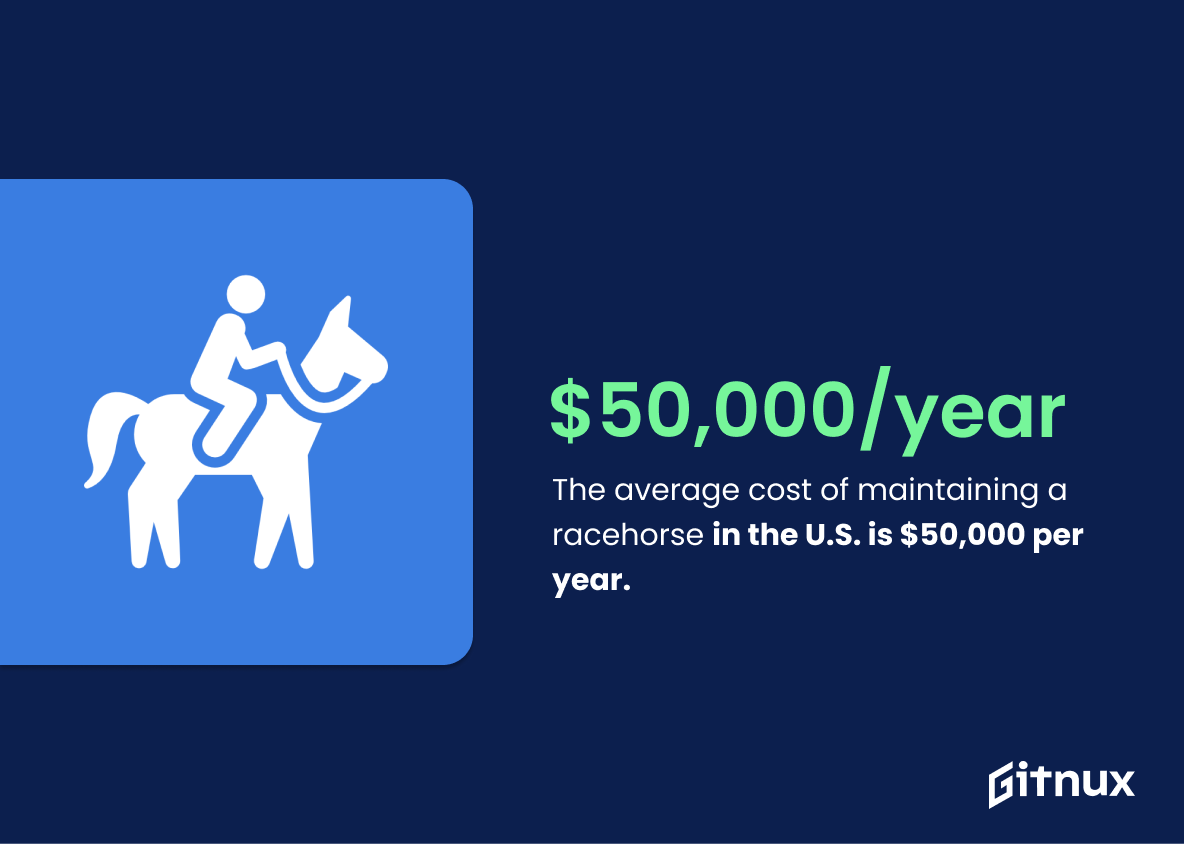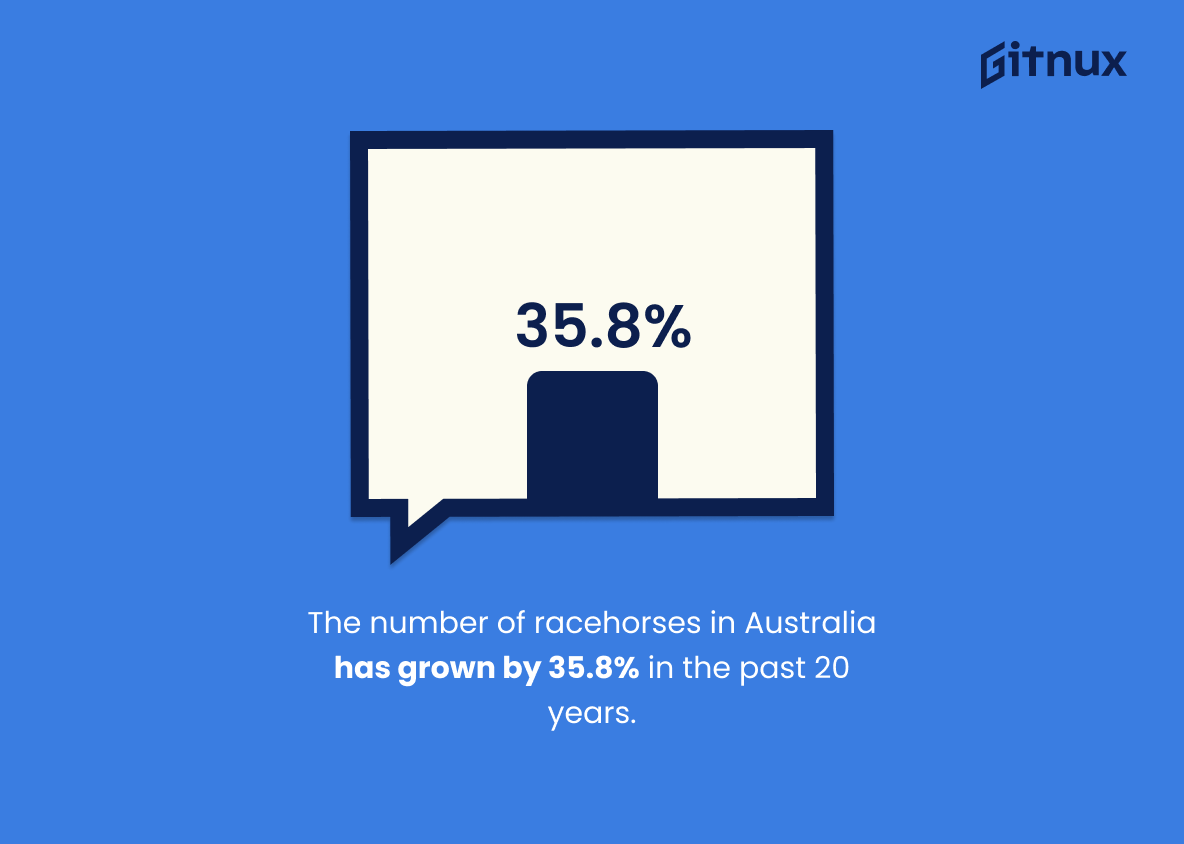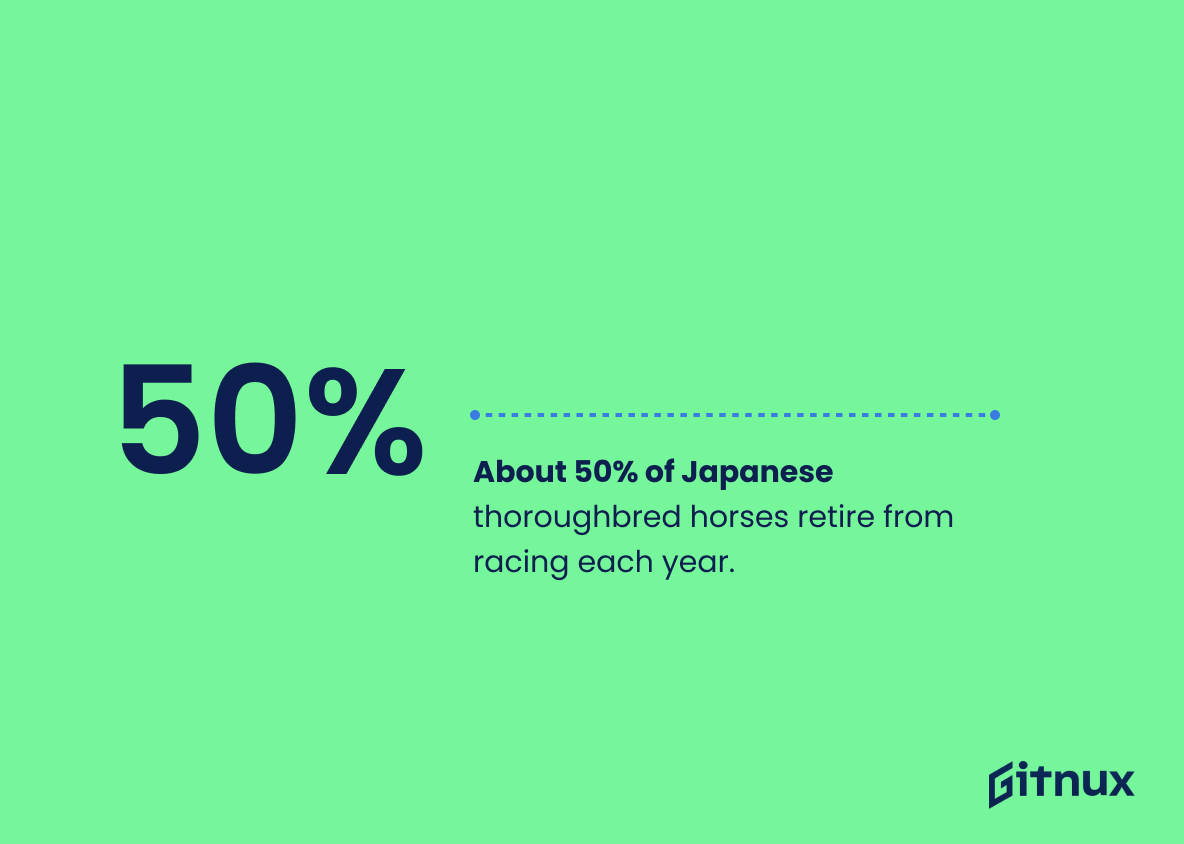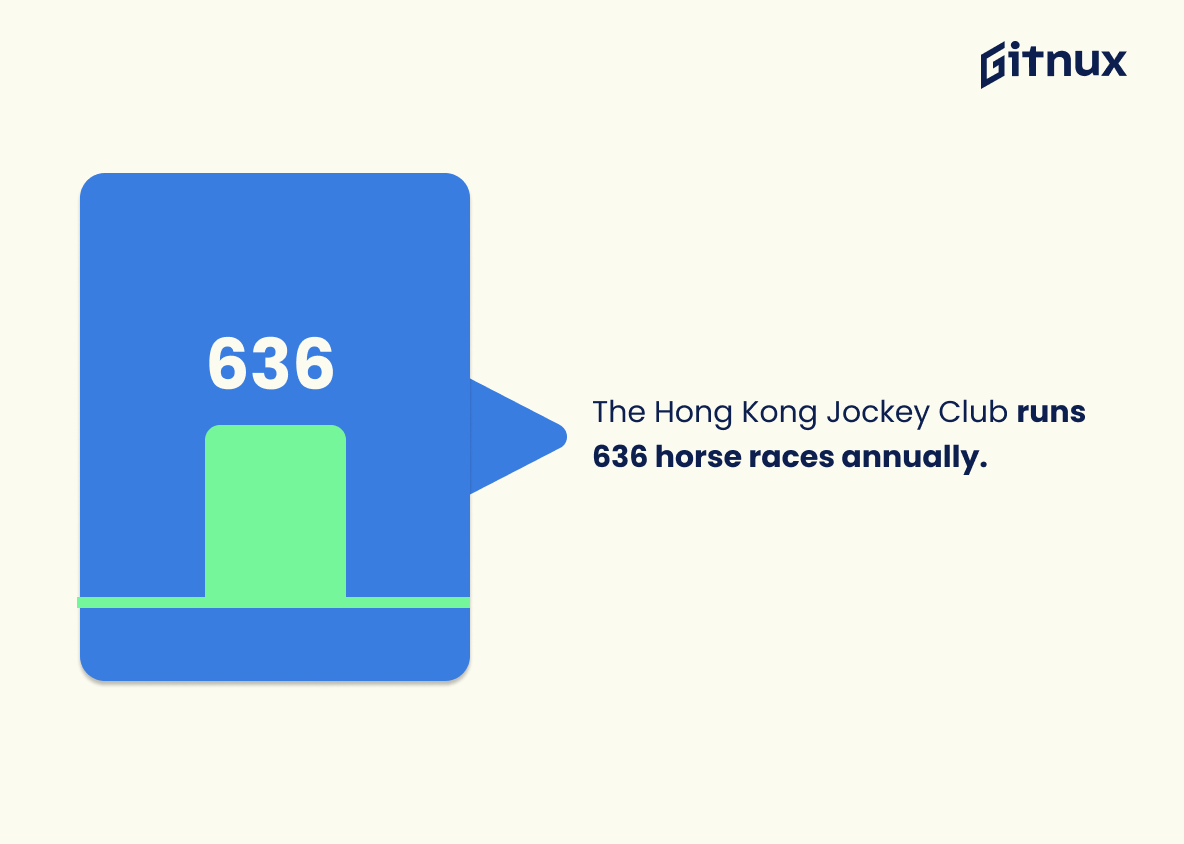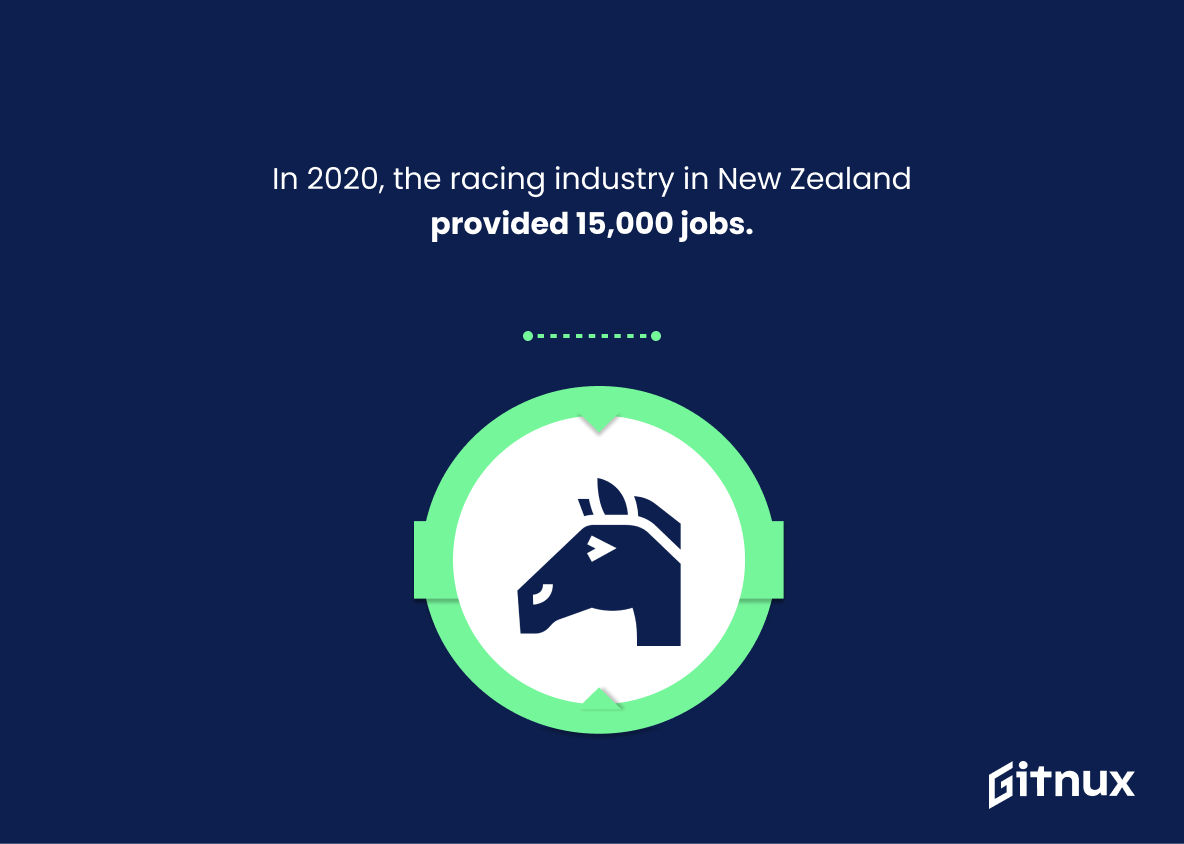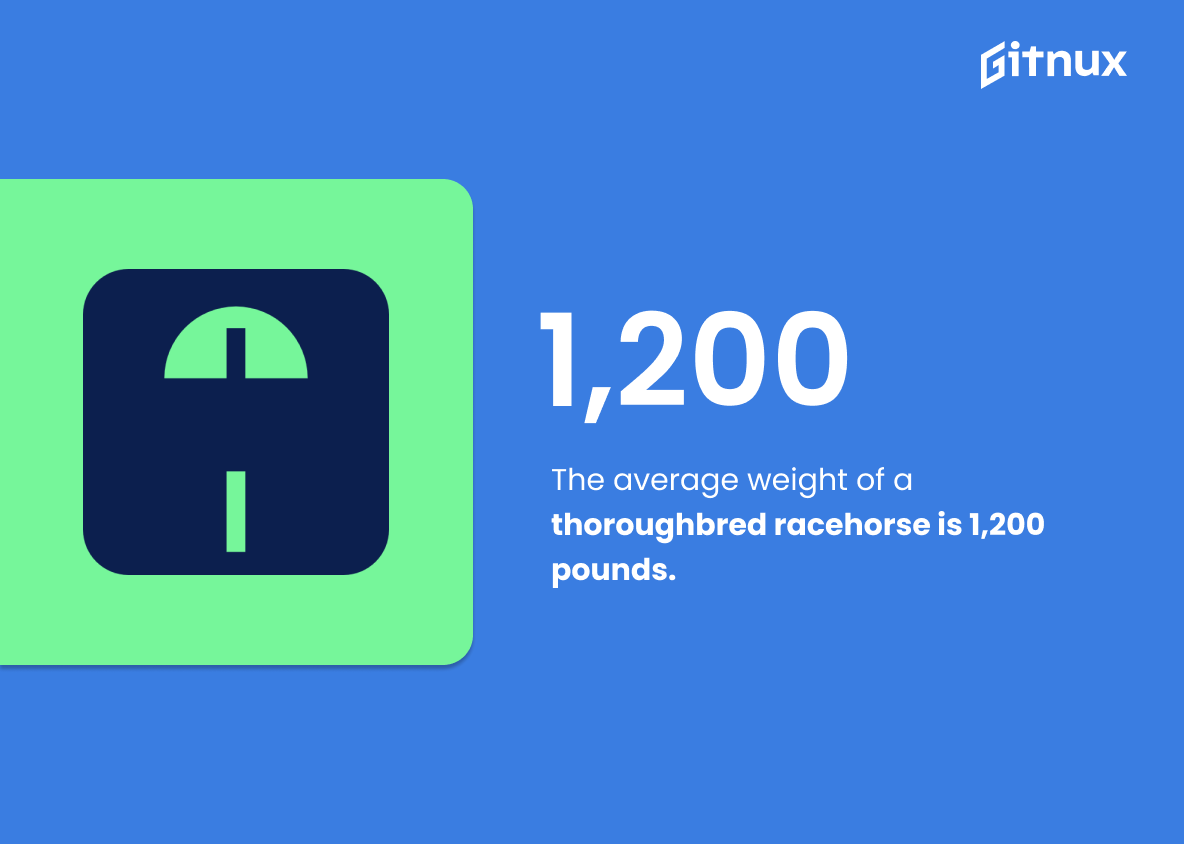Are you ready to explore the fascinating world of racehorse statistics? From the number of horses in training, to their economic impact and even how many foals are registered each year – there is a wealth of information available about this beloved sport. In this blog post, we will take a look at 20 interesting facts and figures related to racehorses from around the globe.
This statistic serves as a stark reminder of the dangers of horse racing. It highlights the risks that jockeys take every time they mount a horse and race, and the potential consequences of such a dangerous sport. It is a reminder that, while horse racing can be an exciting and thrilling sport, it is also one that can have serious and sometimes fatal consequences.
Approximately 99% of thoroughbred racehorses have Northern Dancer’s bloodline running through their pedigree.
This statistic is a testament to the lasting legacy of Northern Dancer, a legendary racehorse who has had an immense impact on the thoroughbred racing industry. His bloodline has been passed down through generations of racehorses, making him one of the most influential sires in the history of the sport.
Race Horse Statistics Overview
The average cost of maintaining a racehorse in the U.S. is $50,000 per year.
This statistic is a crucial piece of information when it comes to understanding the financial implications of owning a racehorse in the U.S. It provides insight into the costs associated with keeping a horse in top condition and competing in races, and can help potential owners determine if they have the resources to take on such an endeavor. Additionally, it can be used to compare the cost of maintaining a racehorse in the U.S. to other countries, and to compare the cost of maintaining different types of horses.
The number of racehorses in Australia has grown by 35.8% in the past 20 years.
This statistic is a testament to the increasing popularity of racehorses in Australia. It shows that the sport has seen a steady growth in the past two decades, indicating that more and more people are taking an interest in the sport. This is an important statistic to consider when discussing the state of racehorse statistics in Australia.
About 50% of Japanese thoroughbred horses retire from racing each year.
This statistic is a telling indication of the state of the Japanese thoroughbred horse racing industry. It suggests that, despite the popularity of the sport, a significant portion of horses are not able to remain competitive for long. This could be due to a variety of factors, such as inadequate training, poor nutrition, or even the horses simply not being suited for the sport. Whatever the cause, this statistic is a reminder that the industry needs to take steps to ensure that horses are given the best chance to succeed.
The Hong Kong Jockey Club runs 636 horse races annually.
This statistic is a testament to the sheer scale of the Hong Kong Jockey Club’s operations. It highlights the sheer number of races that take place each year, showcasing the sheer size and scope of the horse racing industry in Hong Kong. This statistic is a great starting point for any blog post about Race Horse Statistics, as it provides a baseline for further exploration into the industry.
In 2020, the racing industry in New Zealand provided 15,000 jobs.
The statistic that the racing industry in New Zealand provided 15,000 jobs in 2020 is a powerful reminder of the importance of the industry to the country’s economy. It highlights the fact that the racing industry is a major employer and contributor to the nation’s GDP, and that it is an important part of the country’s overall economic health. This statistic is a testament to the strength of the industry and its ability to provide employment opportunities to thousands of people. It is a reminder of the importance of the racing industry to the nation and its people, and of the need to continue to support and invest in the industry.
The average weight of a thoroughbred racehorse is 1,200 pounds.
This statistic is an important indicator of the physical capabilities of a thoroughbred racehorse. It provides insight into the strength and endurance of the breed, which is essential for success in the sport. Knowing the average weight of a thoroughbred racehorse can help trainers and owners make informed decisions about the best horses to enter into races. Additionally, this statistic can be used to compare the physical attributes of different breeds of racehorses, allowing for a more comprehensive understanding of the sport.
Conclusion
The racing industry is a global phenomenon that has been around for centuries. From the United States to Australia, Japan and New Zealand, racehorses are an integral part of many countries’ economies. There are approximately 58,000 racehorses in training in the U.S., with 35,000 foals registered as racehorses each year and revenue valued at $2.52 billion in 2019 alone. The chance of achieving stakes-winning status is 2.6%, while the average purse for a thoroughbred horse race is $32,000 per event on average worldwide – though this varies from country to country depending on their respective regulations and economic conditions surrounding horse racing activities within them.
Thoroughbreds have Northern Dancer’s bloodline running through 99% of their pedigrees; however there can be significant risks associated with being involved in such an activity due to jockey deaths occurring at 200 per 100 000 participants annually globally according to some estimates . Despite these potential dangers , it remains one of the most popular sports across multiple continents providing employment opportunities for over 240 000 people just within America’s borders – not including those employed by other licensed associations or independent trainers/owners who may also benefit from its success.
With 1 4 million thoroughbred horses existing today , 110 746 races run every year internationally (including 636 held solely by Hong Kong Jockey Club) plus 15 000 jobs created specifically because of New Zealand’s involvement ; it appears that this sport will continue growing into future generations regardless if you’re talking about two-year olds making up 40 % percent UK population or 9 % US counterparts respectively – all weighing roughly 1200 pounds when fully grown adults.
References
0. – https://www.www.racingandsports.com
1. – https://www.sportsaspire.com
2. – https://www.www.derbybarandgrill.com
3. – https://www.www.canterusa.org
4. – https://www.www.japantimes.co.jp
5. – https://www.www.ncbi.nlm.nih.gov
6. – https://www.loveracing.nz
7. – https://www.racing.hkjc.com
